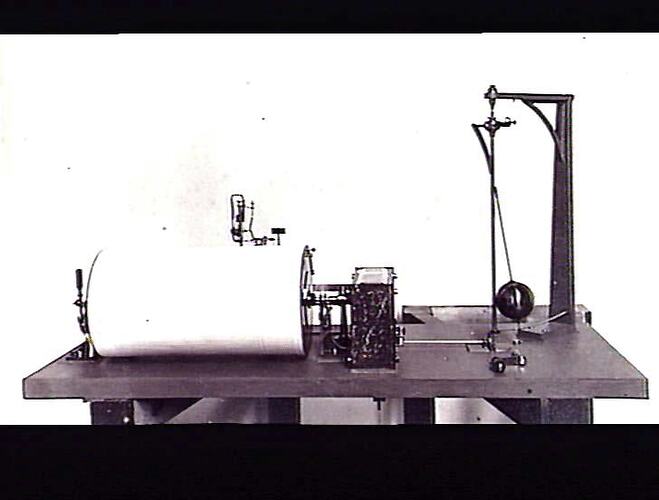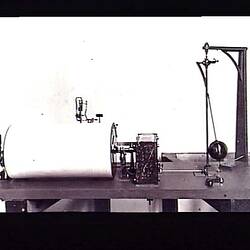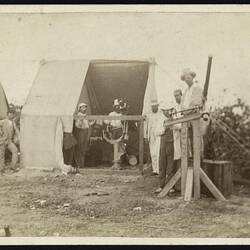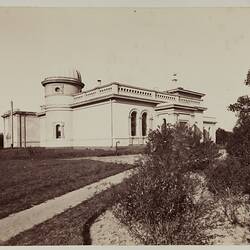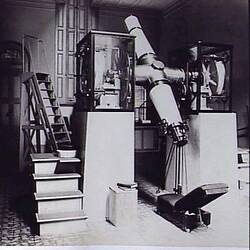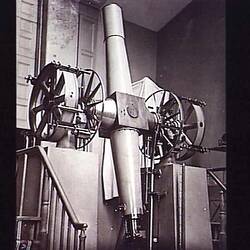Observing the precise positions of stars required a huge amount of technology, calculation and concentration on the part of the observer. The astronomer would watch the star as it crossed the field of view of the transit telescope, then press a button as the star crossed each of several fine lines in the eyepiece, and press a button when the star met a crossing horizontal and vertical line. Each time the button was pressed a mark was made on a rotating sheet of paper on a precisely controlled chronograph.
Then the astronomer had to shift position and read several microscopes directed at the finely ruled scales on the transit circle, to determine both declination and right ascension (the celestial equivalent of latitude and longitude). Including the taking of the temperature and air pressure, there were as many as 22 different observations to be made for a single star. (See Maunder 1900, pp. 156-63 for a description of the procedure at Greenwich Observatory.)
The observation itself was only the start. Each observation had then to be adjusted carefully to allow for many factors that would influence the measurement: the bending of the star's light rays by the earth's atmosphere, the known errors of the instrument, and other technical factors such as precession, nutation and aberration. These laborious calculations had to be made using pencil and paper and logarithmic tables. A transit observation of 3 or 4 minutes could take hours of computation.
Even the observer had to be taken into account as a source of error. In 1796 the British Astronomer-Royal had dismissed his assistant because he had a 'vicious way of observing the times of the Transits too late', by as much as a second. Astronomers realised that each one had a slightly different way of recording the time; some anticipated the star crossing the line a moment too early, others were slow. Frequent testing allowed the calculation of each observer's peculiar but fairly consistent habits, or 'personal equation', and this could be allowed for in the final calculation of the star's position.
Melbourne Observatory's astronomers would undertake observations of the same stars, to compare their personal equations and adjust their observations to a common standard. When in 1883 Australian observatories undertook to more accurately determine the longitude of each observatory, Pietro Baracchi, a young scientist who was soon to join the Melbourne Observatory staff, was sent to each Australian observatory to compare his personal equation with those of the primary observers in each colony. Typically the differences were no more than a quarter to a third of a second, but it was important to adjust for these if accurate determinations of longitude were to be made.
References:
Maunder, E. Walter (1900). The Royal Observatory Greenwich: A Glance at its History and Work, London: The Religious Tract Society.
Schaffer, Simon (1988). 'Astronomers mark time: discipline and the personal equation,' Science in Context, 2, pp.115-145.
More Information
-
Keywords
-
Authors
-
Article types
